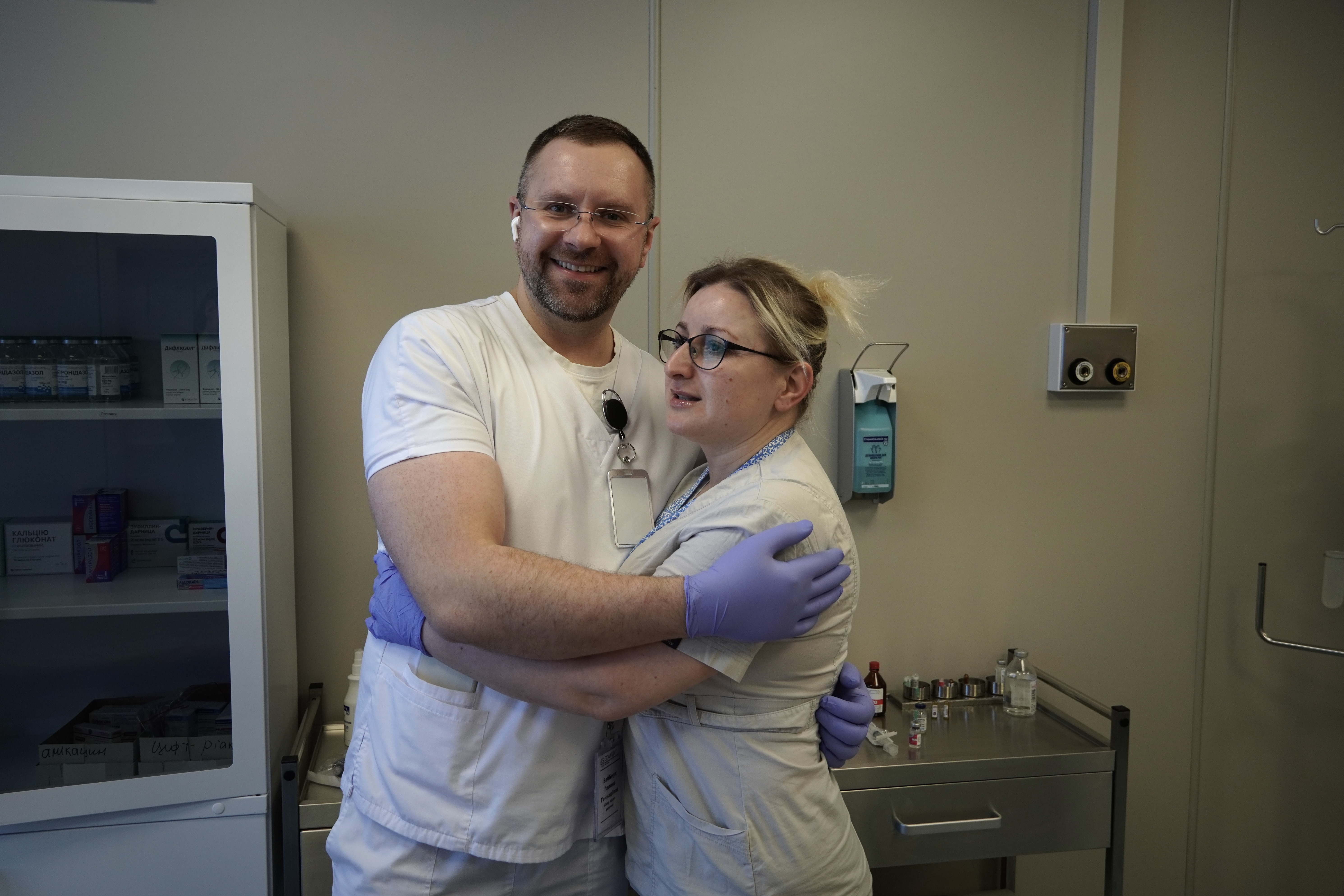"A work shift lasting about 63 days". How the largest children's hospital, Okhmatdyt, works during the war
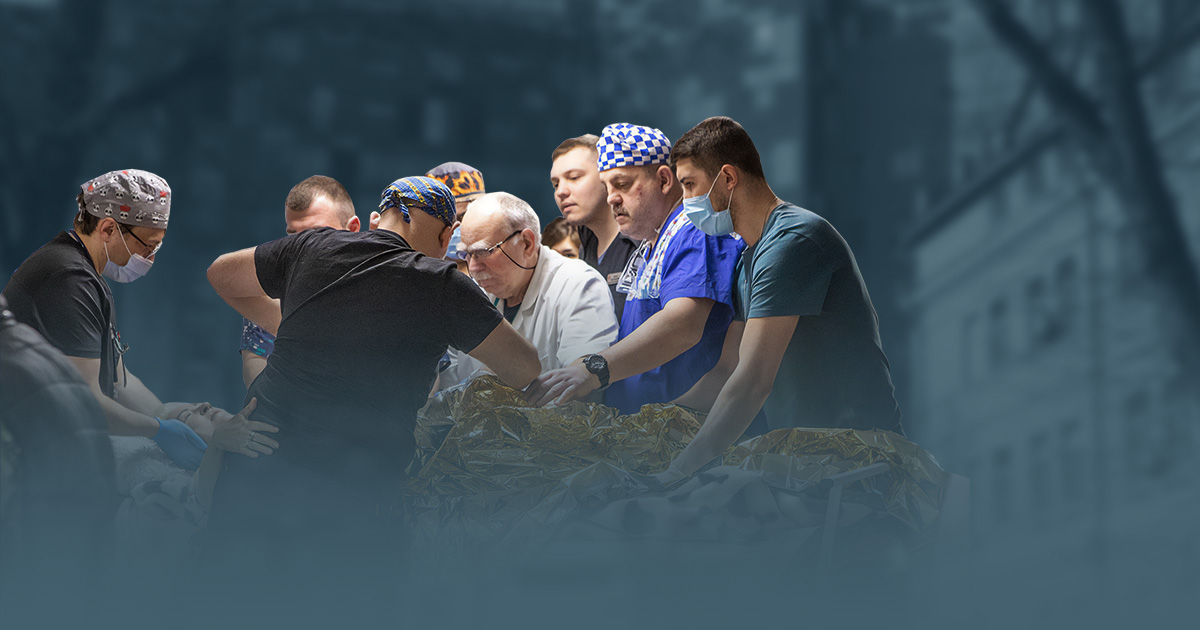
"What fears can there be and where to go if a post-operative patient requires transfer from the 4th floor to the 0th floor?" say the surgeons at the largest children's hospital in Ukraine, Okhmatdyt.
At the beginning of the full-scale war, the hospital became a refuge for patients and staff living there for several months. When the first missiles were flying over Kyiv, and the military was eliminating sabotage groups, wounded children and adults were constantly arriving at the hospital. Doctors performed operations despite the sounds of explosions and sirens.
Read about how the hospital operates in the context of a full-scale war in Svidomi's article.
The first days of the invasion
Okhmatdyt is the largest specialised children's hospital in Ukraine. About nine thousand operations are performed here every year. The hospital is located in Kyiv, a whole town of different buildings that became a temporary home for patients and staff at the beginning of the full-scale war — everyone who works came to be helpful.
"Everyone who came worked as long as necessary. There was one work shift that lasted about 63 days. Getting there was difficult and dangerous for those who lived on the outskirts, so we stayed here. That's how all the patients, relatives and staff were accommodated and lived in one hospital - some were treated, and some worked," recalls Professor Vasyl Prytula, a surgeon at the Department of Abdominal Surgery.
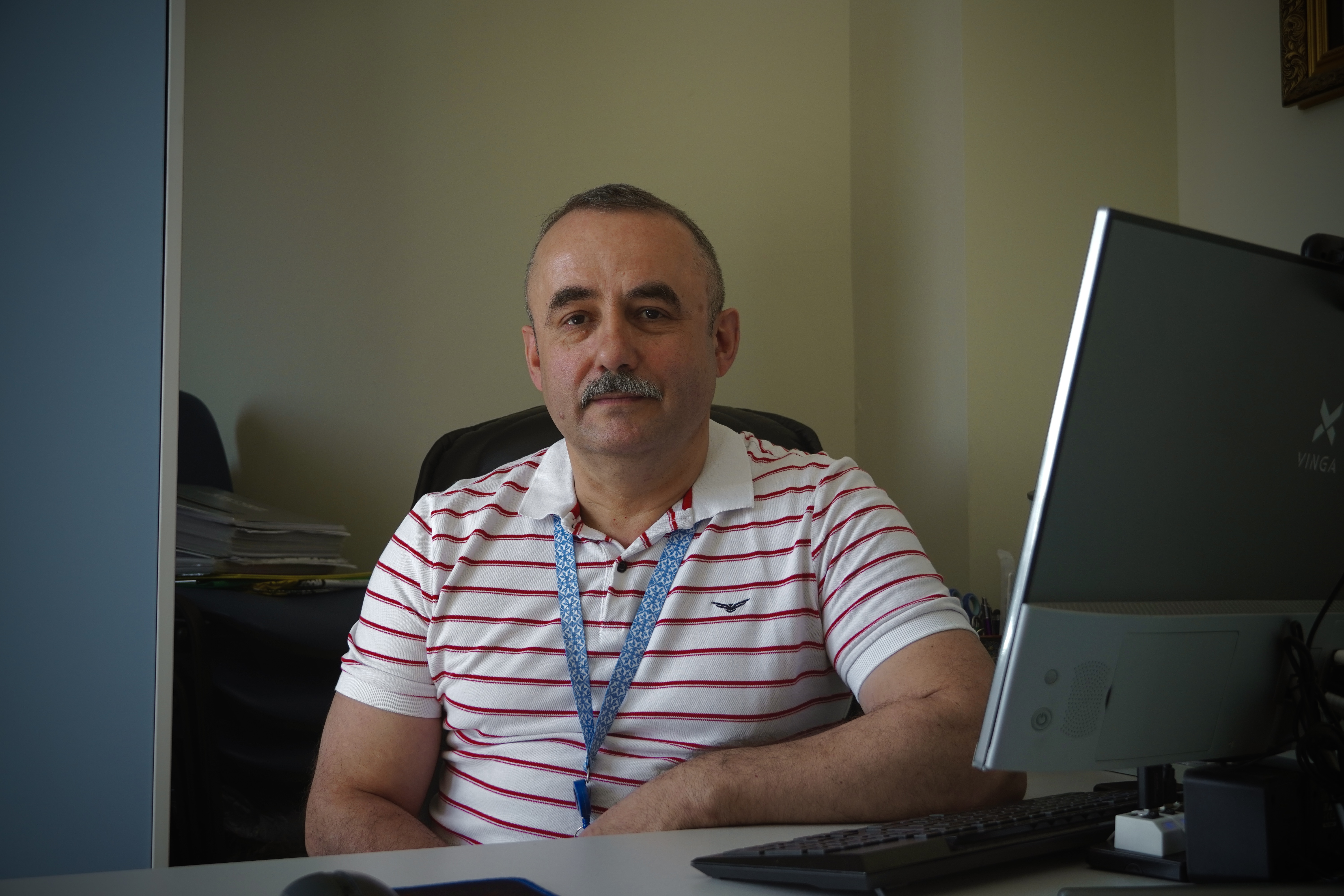
Surgeon Serhii Petryk is from Hostomel. He says on February 24, he woke up to explosions. He walked his dog and went to work. When he returned home in the evening, the road was clear, and his neighbours reported about Russian subversive groups. A few days later, he settled in Okhmatdyt.
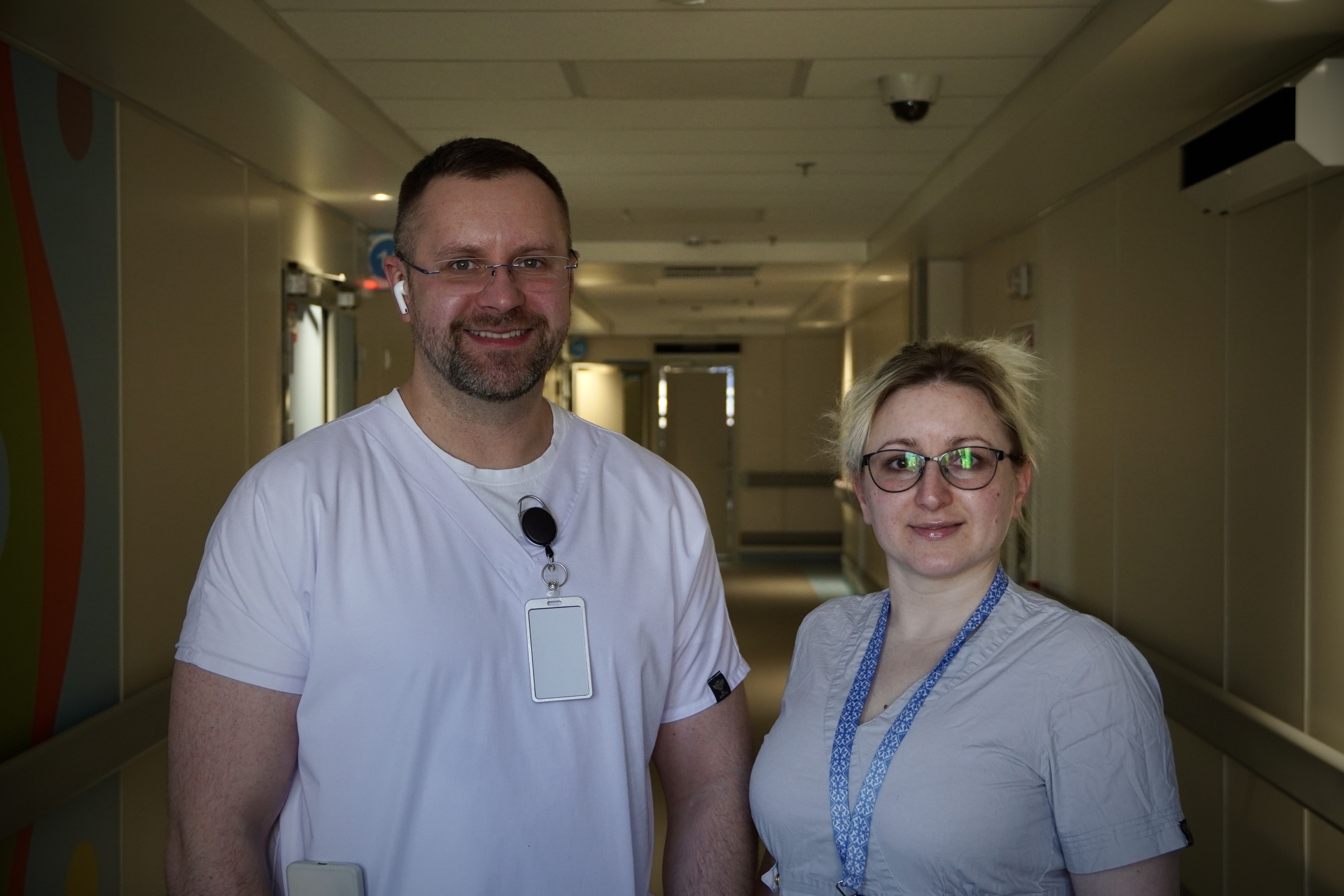
The most significant influx of wounded was in the first days when sabotage groups were eliminated and the first rockets fell. At that time, Okhmatdyt worked not as a children's hospital but as a hospital for everyone who needed help.
"Everyone worked smoothly, as a single mechanism. There was no personal fear. What fears can there be, and where to run to if a post-operative patient requires transfer from the 4th floor to the 0th floor?" the surgeons say.
Not all patients could be moved to the basements - despite the danger, the doctors remained at their side: "There was a newborn baby on an oxygen tank, and it was physically impossible to evacuate it downstairs, and the intensive care units were busy at the time. And despite the air raid alert, the doctor stayed with the child, filming the shelling from the window."
On March 16, rockets struck near the hospital. The blast wave damaged the windows, and the fragments of one of the rockets were found on the balcony of the neonatal surgery unit.
"We could hear air defence and shooting all the time. Spotlights were shining - as if it were Chinese New Year."
The doctors recall that the children did not panic: they understood what they had to do and why they had to go to the basement. The situation changed the children's attitudes so much that they were playing quietly. The parents' eyes showed anxiety and agitation, but there was no panic or hysteria.
Residents of neighbouring houses also came. The hospital was considered the safest place because there were many people there, and in case of an emergency, they could get help.
"John Doe No. 1" and the wounded due to the war
By the time the full-scale invasion began, not all departments in the new hospital building had been put into operation. However, an emergency medical unit was immediately set up there. It was the one that received the wounded.
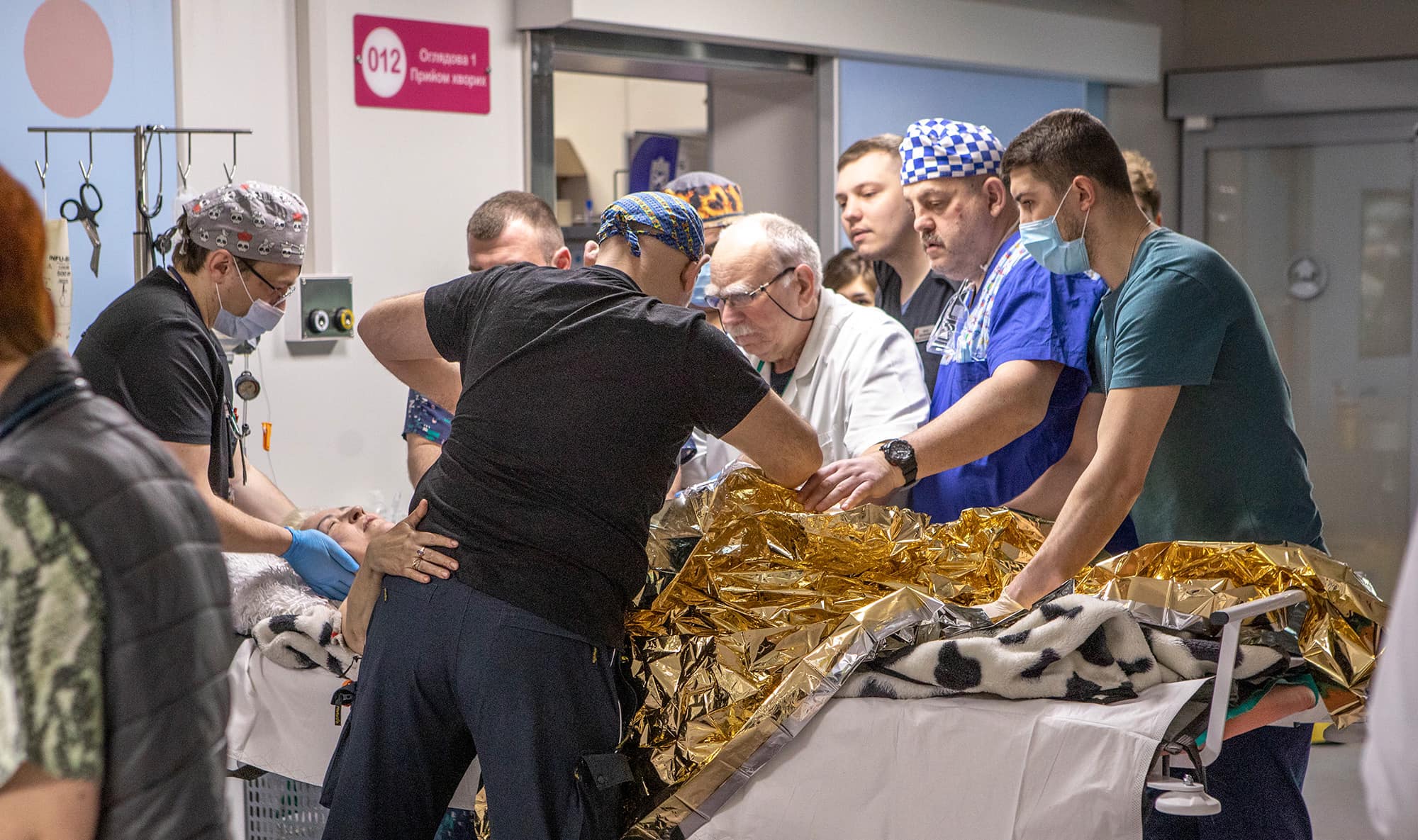
The head of the department, Serhii Klymenko, says that over more than a year of the full-scale war, they have admitted 105 wounded as a result of combat injuries, including 28 children.
The youngest wounded patient was one month old; the oldest was 83. The shortest time from admission to the hospital to transfer to the operating theatre was 13 minutes.
The first wounded from hostilities was brought to Okhmatdyt on February 25. Russians shot his family's car, and his parents were killed. The seven-year-old boy's documents read: 'John Doe No.1'.
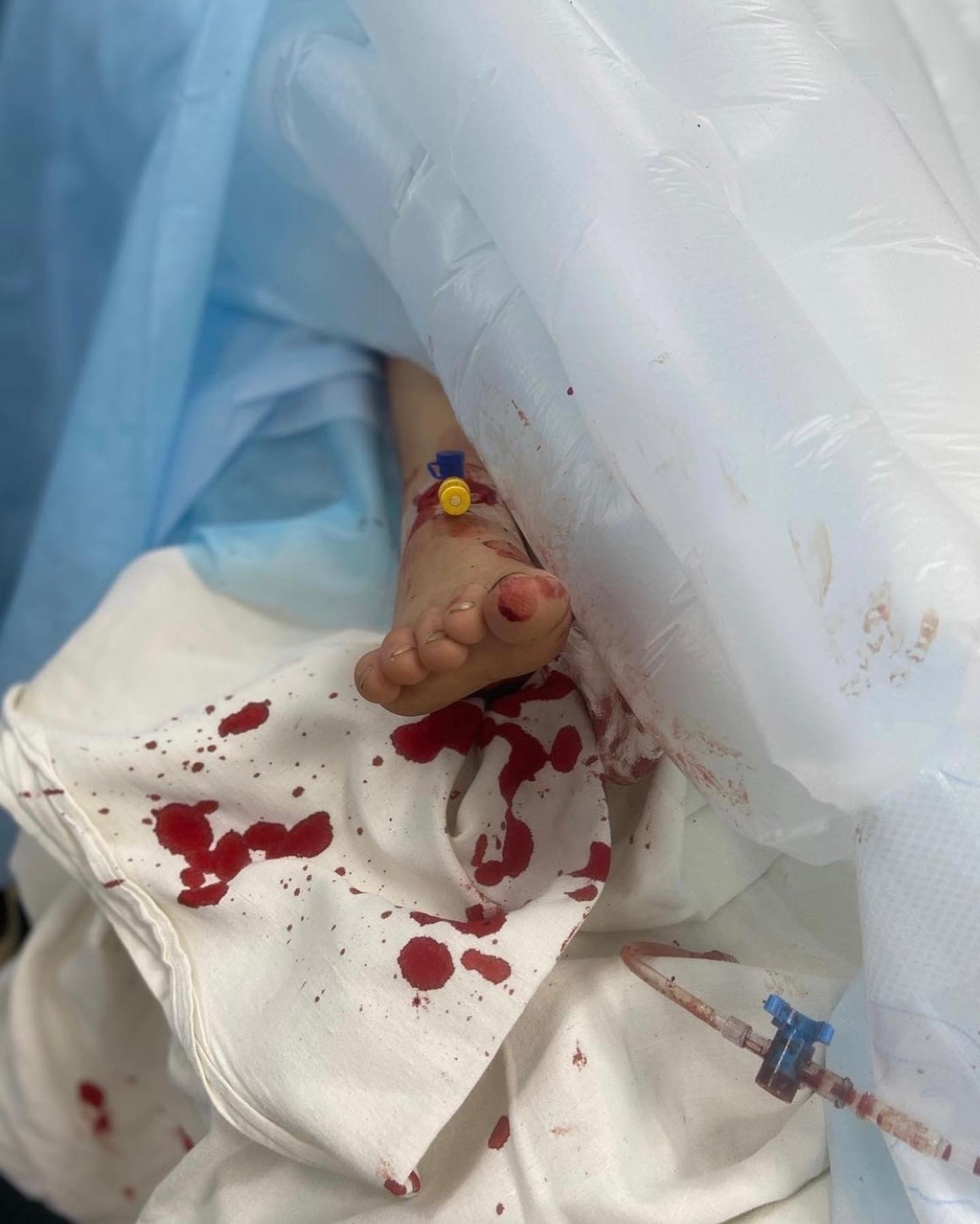
The child was diagnosed with a shrapnel wound to the neck, multiple shrapnel injuries to soft tissues, a head wound and a brain bruise. Doctors fought for his life, but on March 1, the boy died.
Surgeon Halyna Babiichuk recalls one day after the Russian shelling, the wounded father brought his son in his arms. They were returning home when the shelling started. A Russian shell hit the yard, and the son and father received shrapnel wounds. The child was diagnosed with a severe kidney injury.
"We didn't see the injury, and the child was almost unconscious. But, there was a big blood stain on his back," the doctor says.
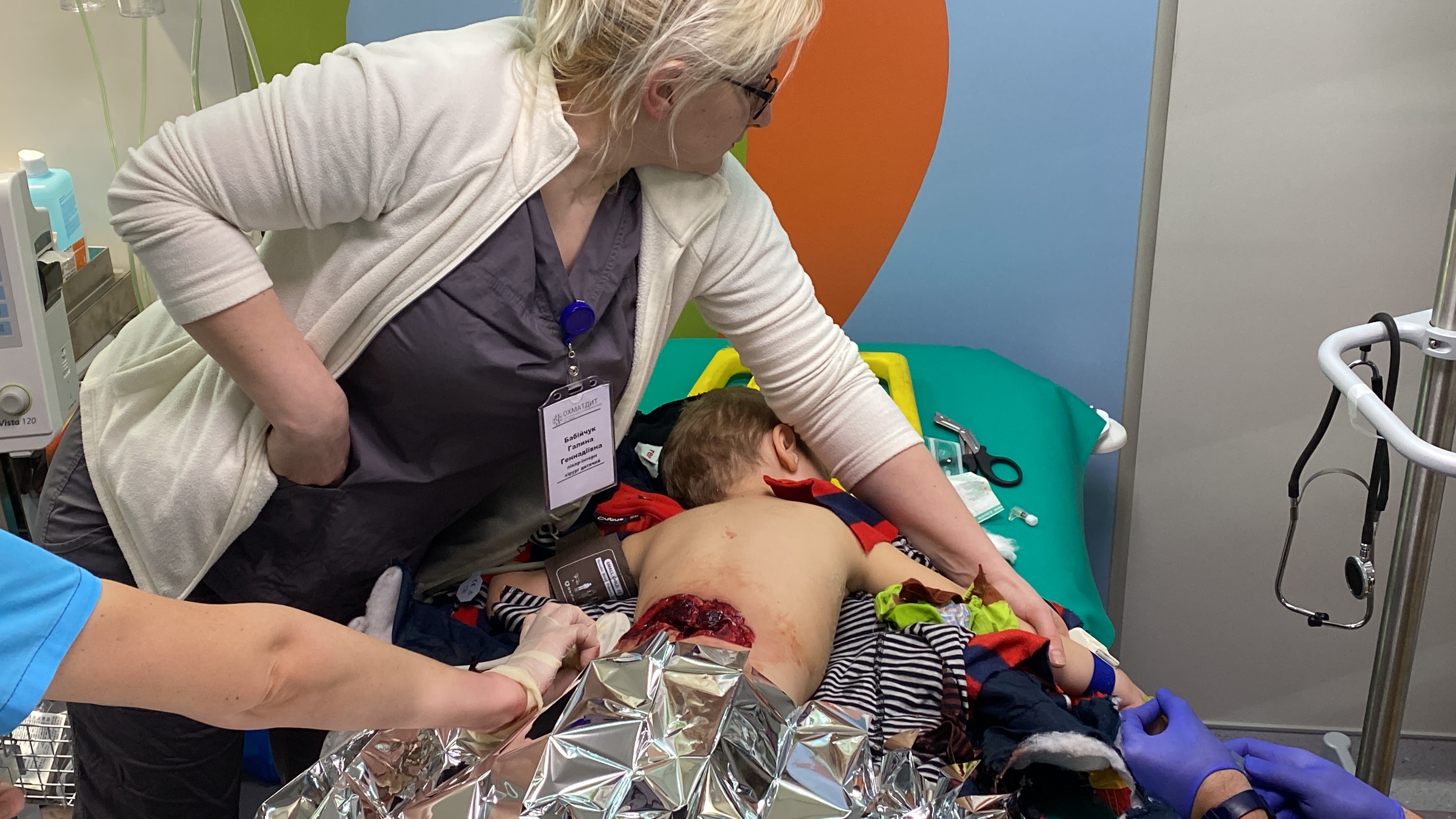
At the beginning of April, at four in the morning, a family from Chernihiv came to Okhmatdyt. On March 17, they went to their yard when the shelling started. Everyone was wounded. The parents and their six-year-old son were taken to different medical institutions in the city. Mum and dad did not know where their child was for four days. Due to a severe intestinal injury, Chernihiv doctors removed 60 cm of the child's organ.
"The wound healed, but it was still fresh, without a bandage — just treated with brilliant green, and not with delicate sutures, as we do, but with knotted sutures. So while treating the child, we did not think about plastic surgery or delicate stitches. And the boy said: "Auntie, I have a wound here, but it doesn't hurt anymore; it's healed." It was as if you were not calming the children, but the children were calming you," says Babiichuk.
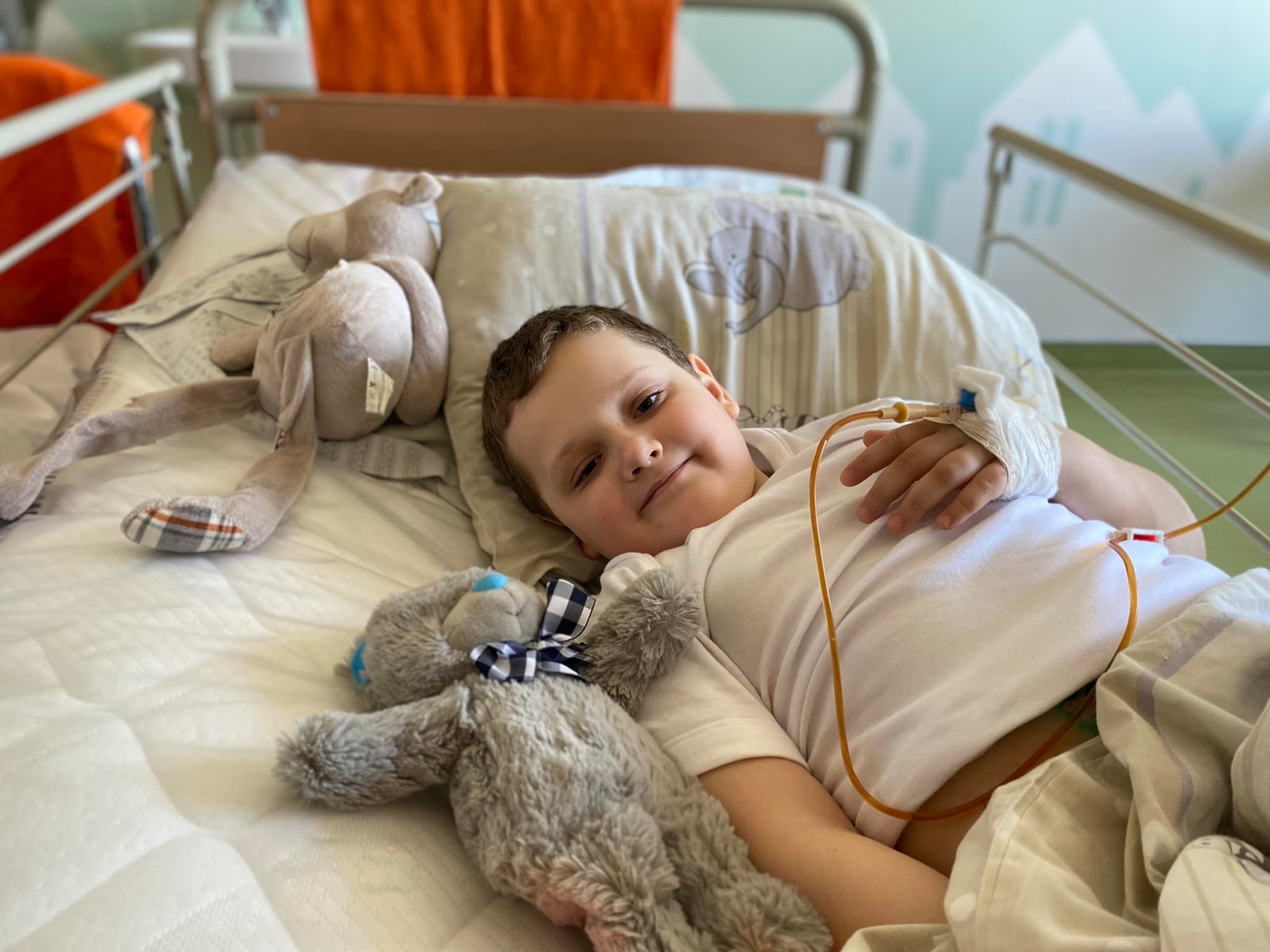
Orphans wounded in Mariupol were also admitted to Okhmatdyt. These were the first cases during the full-scale war when Ukraine managed to return children from the Donetsk region temporarily occupied since 2014.
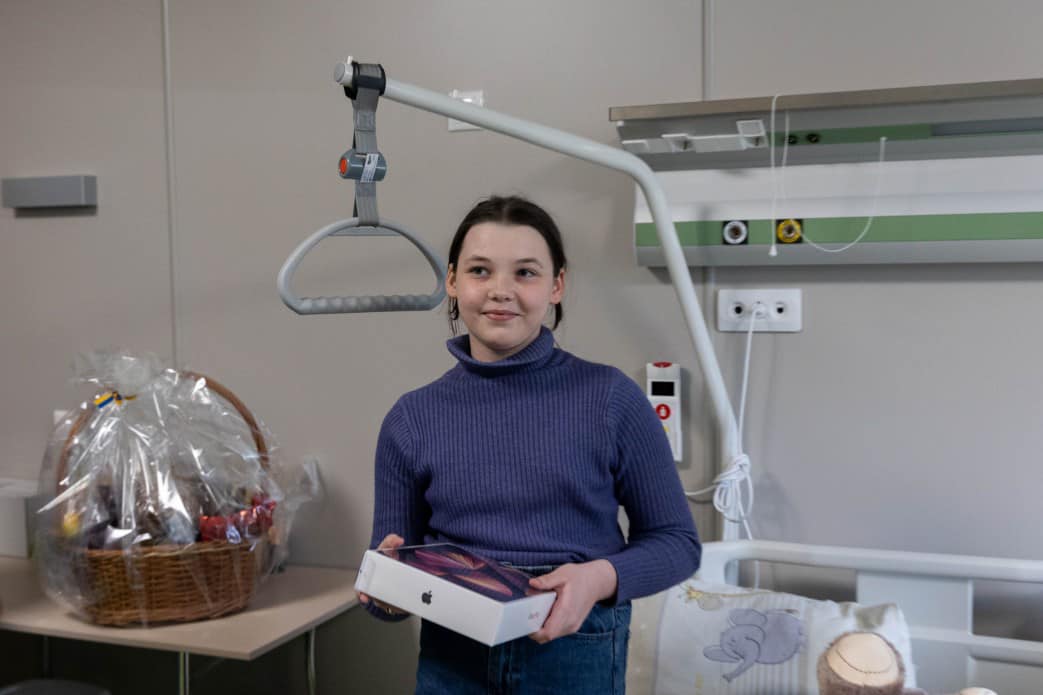
Russians killed Kira's father; his body remained under the rubble. The girl gоt blown up on a tripwire when she and others were leaving the city on foot. Illia's leg was blown off during the bombing of Mariupol, and his mother received a head wound and died in her son's arms. Both children were taken to a hospital in the temporarily occupied Donetsk. They were returned to the government-controlled territory by their grandparents. The latter travelled across four states to pick up her grandson.
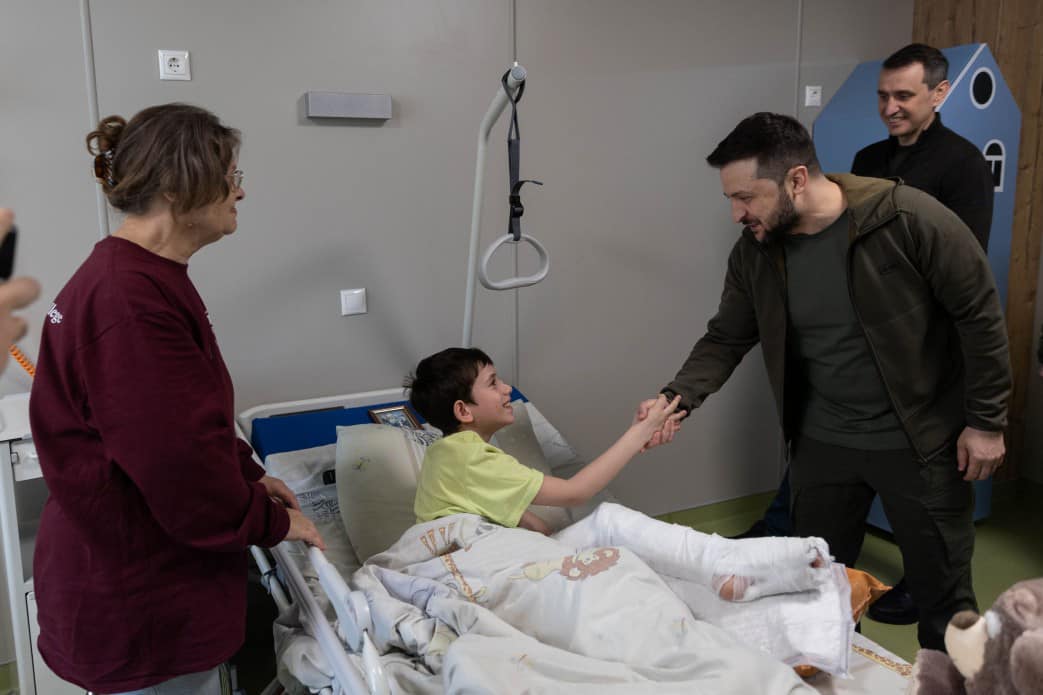
"Negotiations were held at the highest level with Moscow, and mediators were from other countries. The risks that Kira and Illia would be sent deep into Russia and given up for adoption as orphans were extremely high," Iryna Vereshchuk, Minister for Reintegration of the Occupied Territories, told TSN.
A large team of psychologists worked in the hospital all the time. Animators also came to visit the children, and Ukrainian artists organised concerts.
"In peacetime and war, we try to support them. For us, children are not just patients - they are like family. We need to work with them psychologically so that they are at least not afraid of medical staff," says Vasyl Petryk.
Halyna Babiichuk recalls that it gave her chills when she talked to teenagers when they used patriotic phrases and told her how they wanted to develop Ukraine.
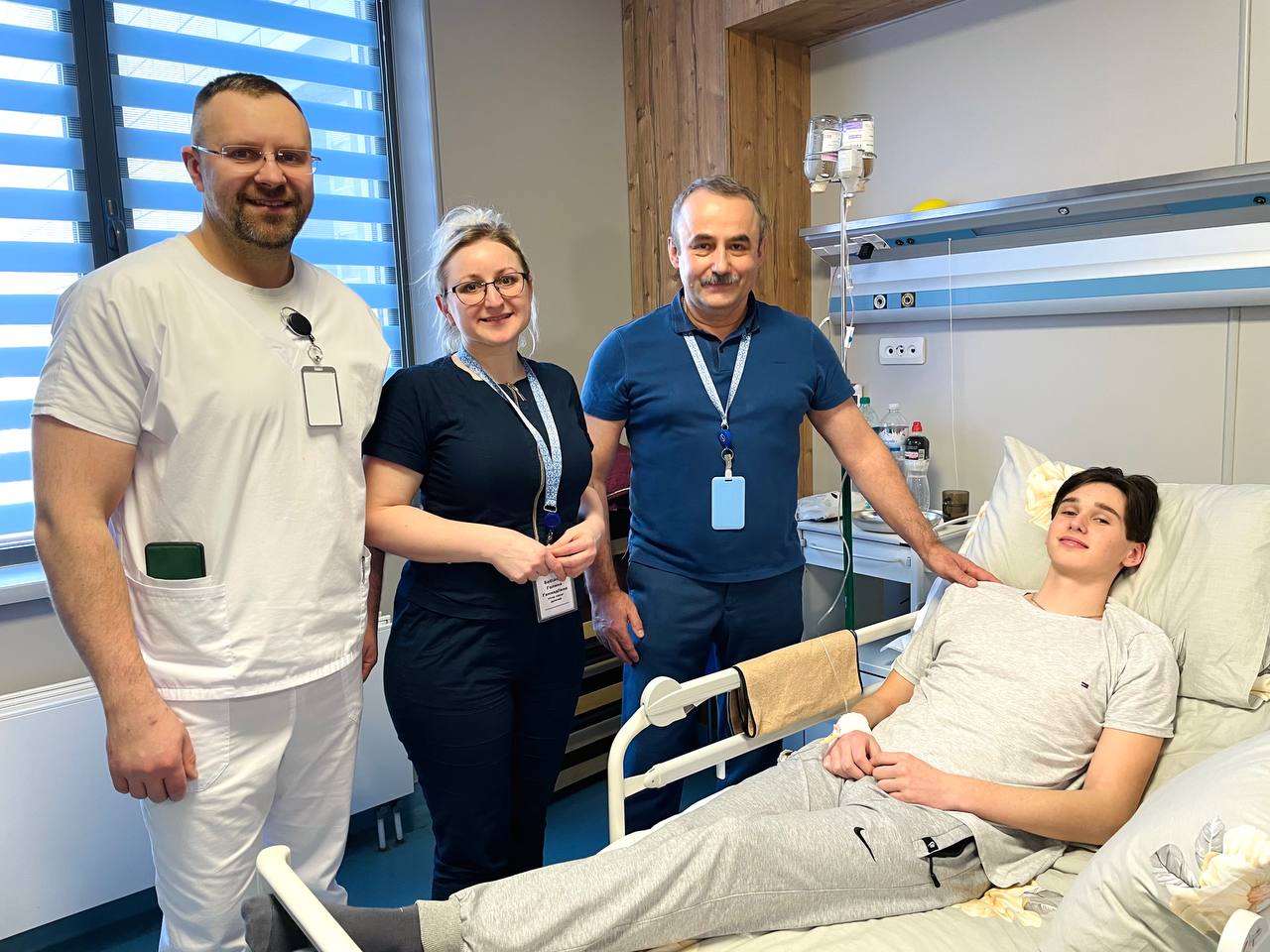
The surgeon says it was more difficult for her to deal with adults: "I was used to having to play with children, to find a way to approach them, to speak in a gentle voice and in a playful way. When adults started coming in, it was hard to switch. If children are in pain, they always say so sincerely, while adults often tolerate it."
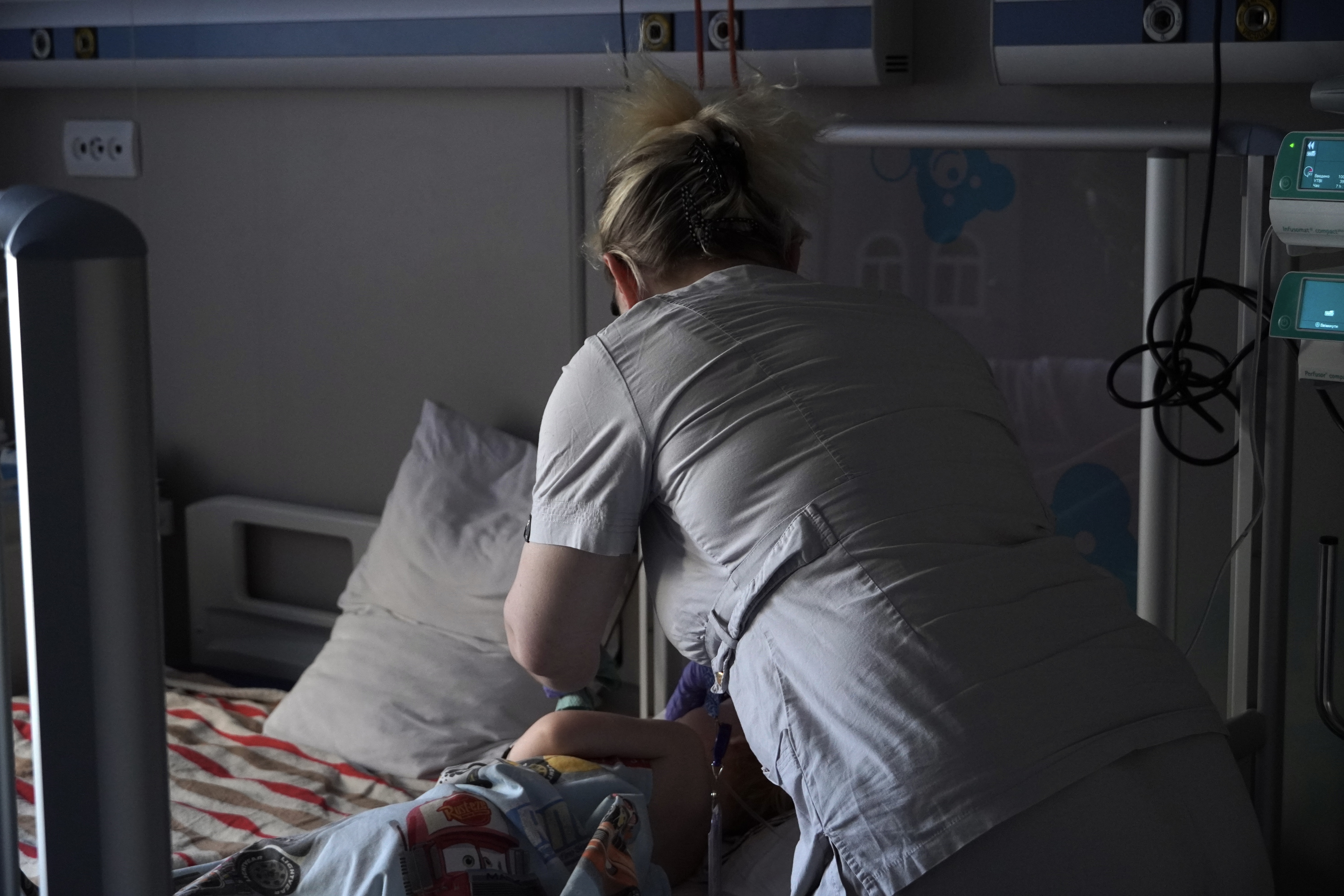
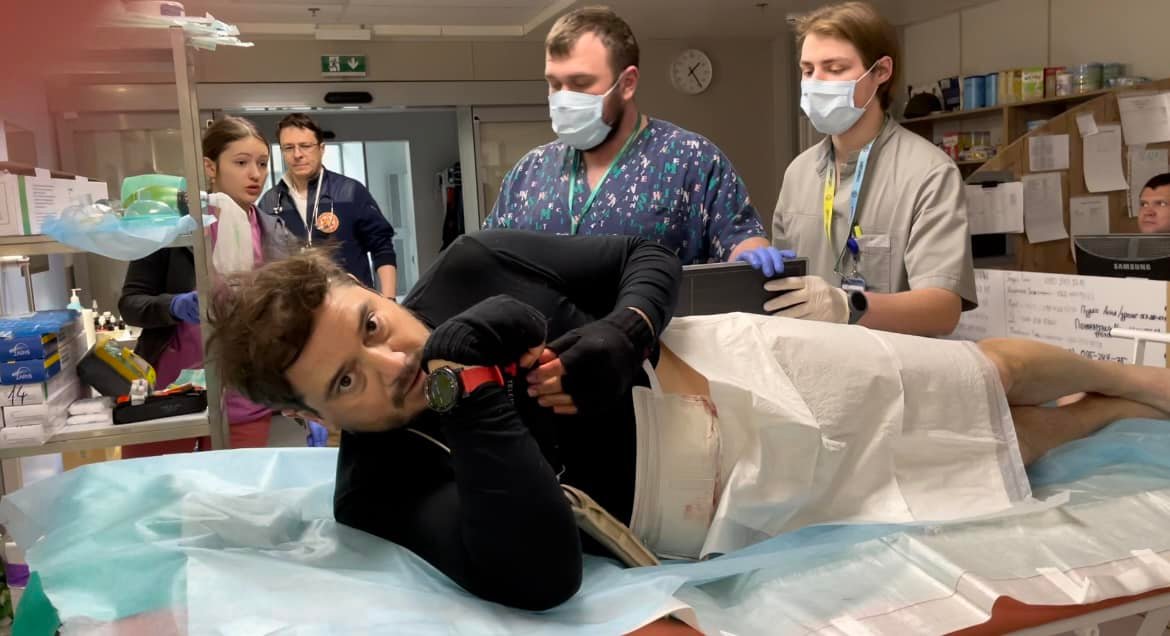
One of the wounded who was taken to Okhmatdyt was also an American journalist, Juan Arredondo. The correspondent was covering the evacuation of the local population from Irpin when he and his colleagues came under Russian fire on March 13. Brent Renaud of The New York Times died on the spot, while Arredondo was wounded in the thigh.
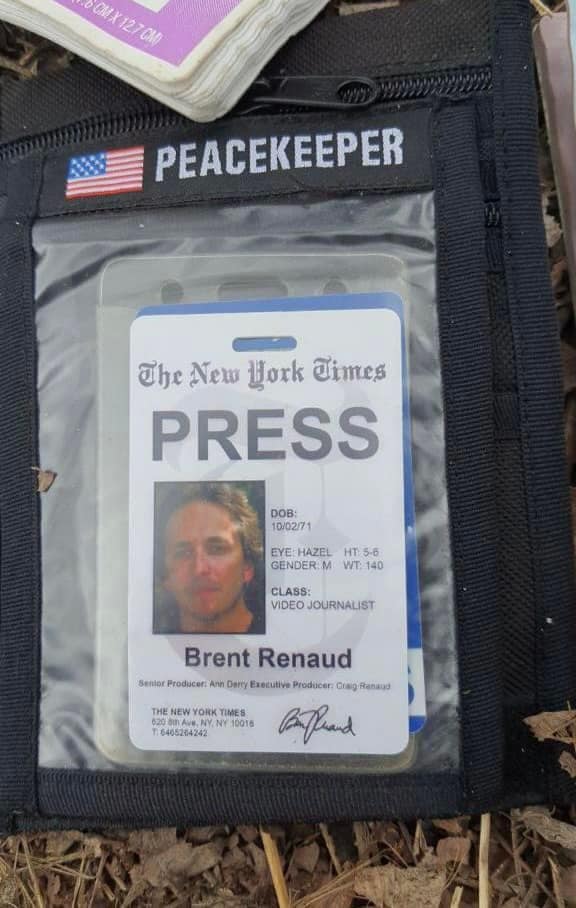
"Juan stayed with us for several weeks. We performed one operation, but more complicated problems were discovered after the examination, so he was operated on again. Then the Doctors Without Borders programme sent him to Europe," says surgeon Petryk, who operated on the journalist.
"On the day I arrived at Okhmatdyt, Arredondo came here. He came to make a film about his deceased colleague and visited the hospital to thank the staff. In total, the journalist underwent six operations.
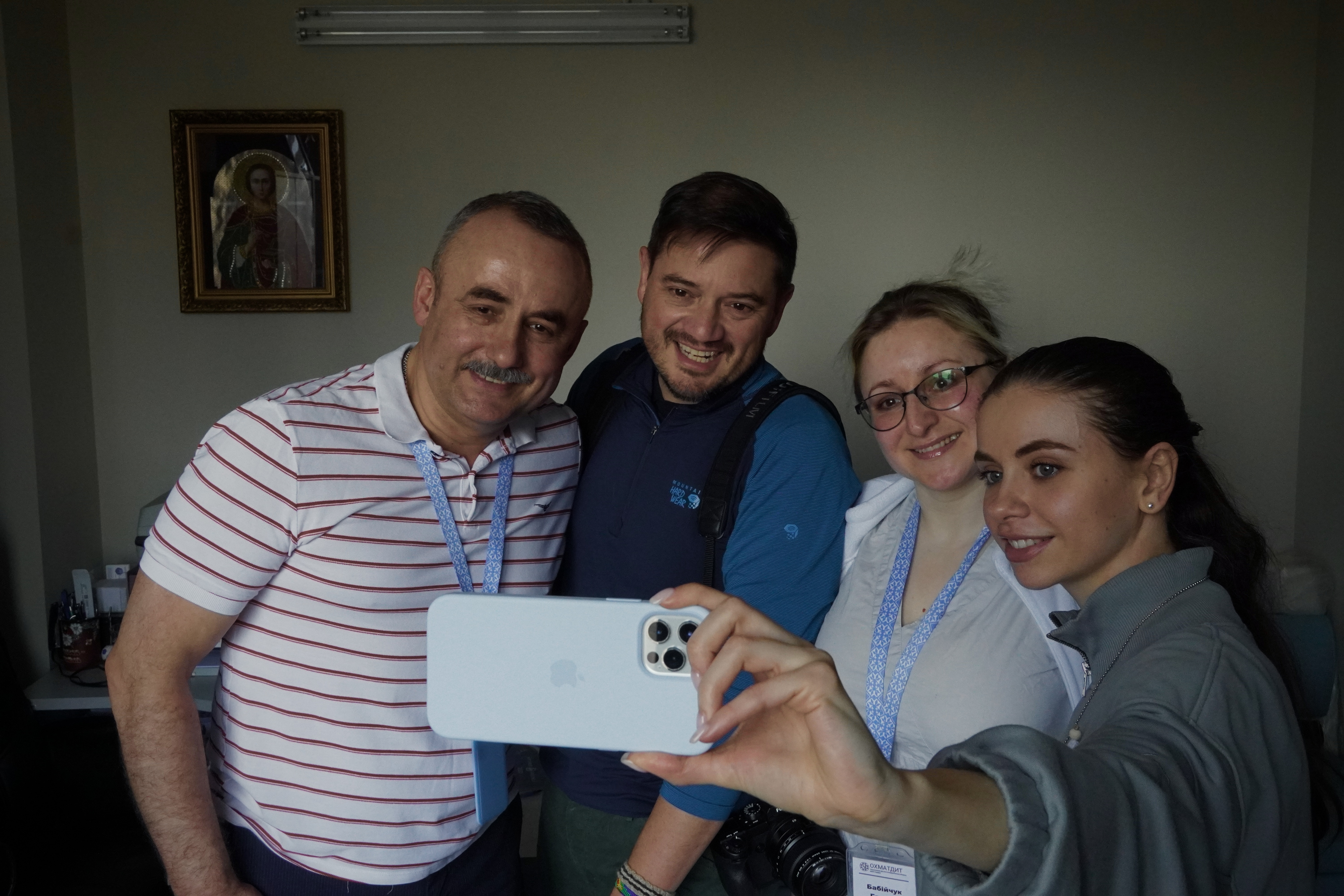
"One of the doctors in New York told me to thank the one who treated me in Ukraine. The surgeons left an inconspicuous sign to find the place to operate next. This made the work of the doctors there much easier," says Juan Arredondo.
He remembers his time at Okhmatdyt in flashes. He only remembers one of the anaesthetists from the medical staff by the tattoo on his arm, so he only recently got acquainted with the professor who operated on him.
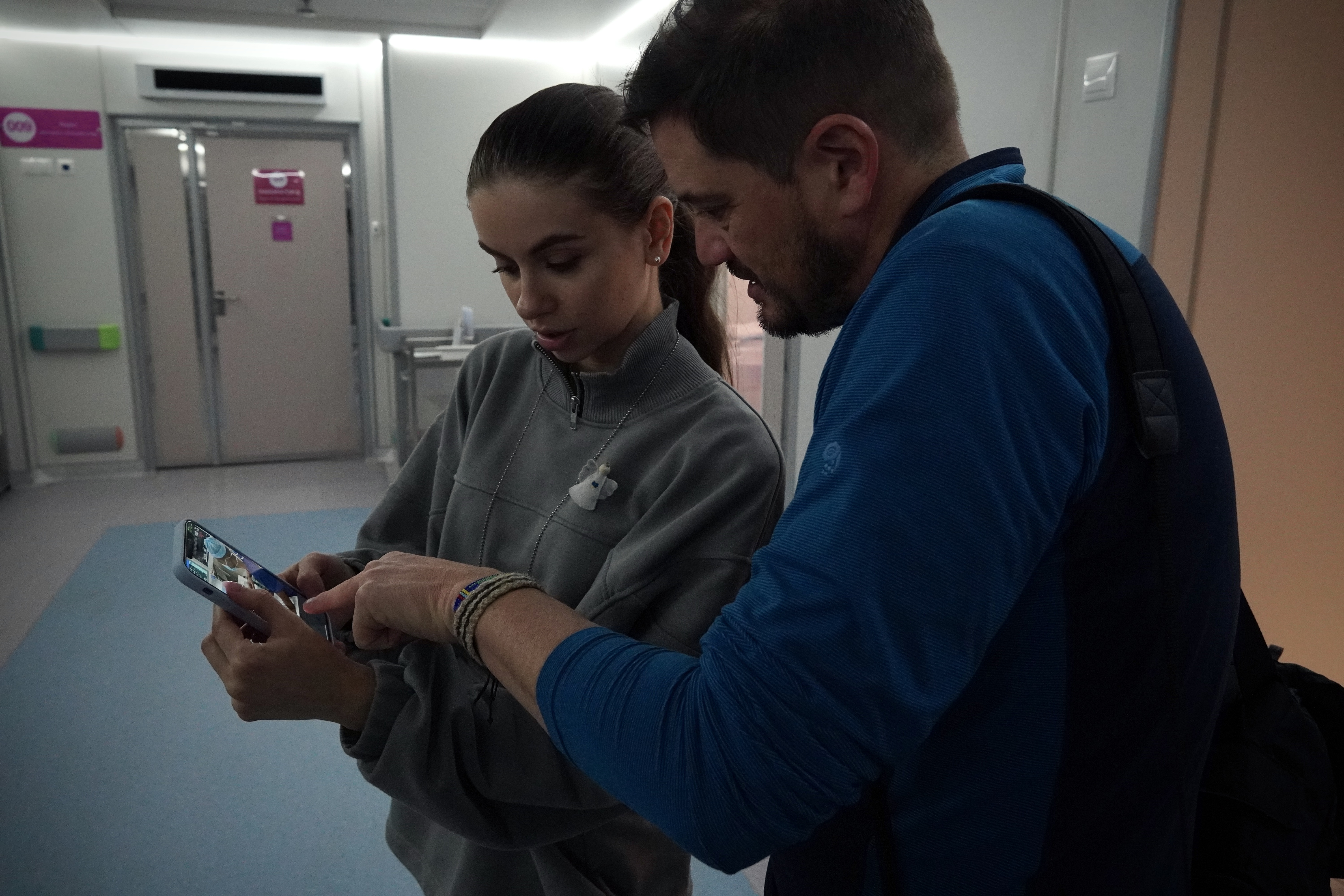
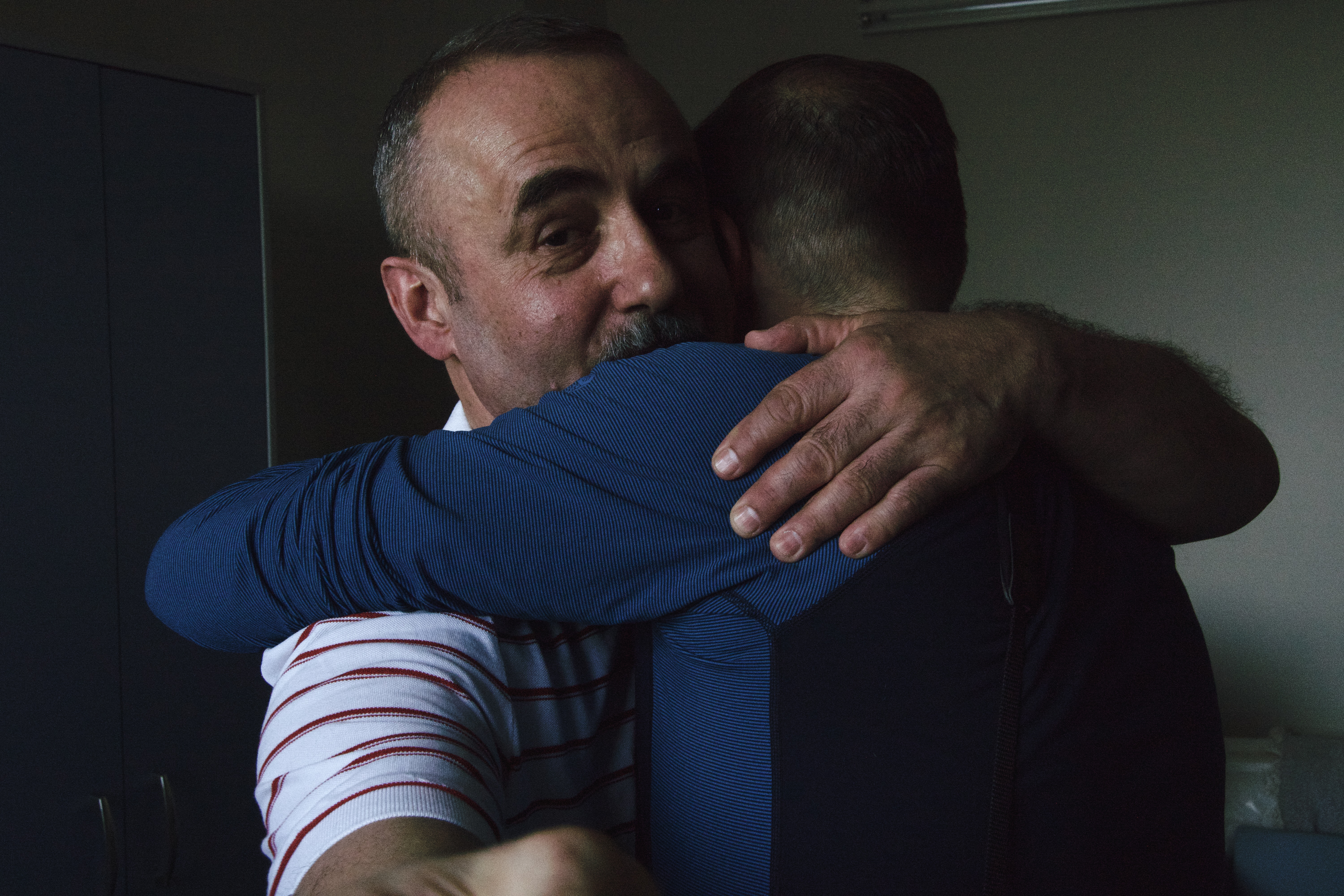
How the doctors held up
One of the doctors at Okhmatdyt was killed due to the war. Oksana Leontieva was a haematologist at the Children's Bone Marrow Transplantation Unit.
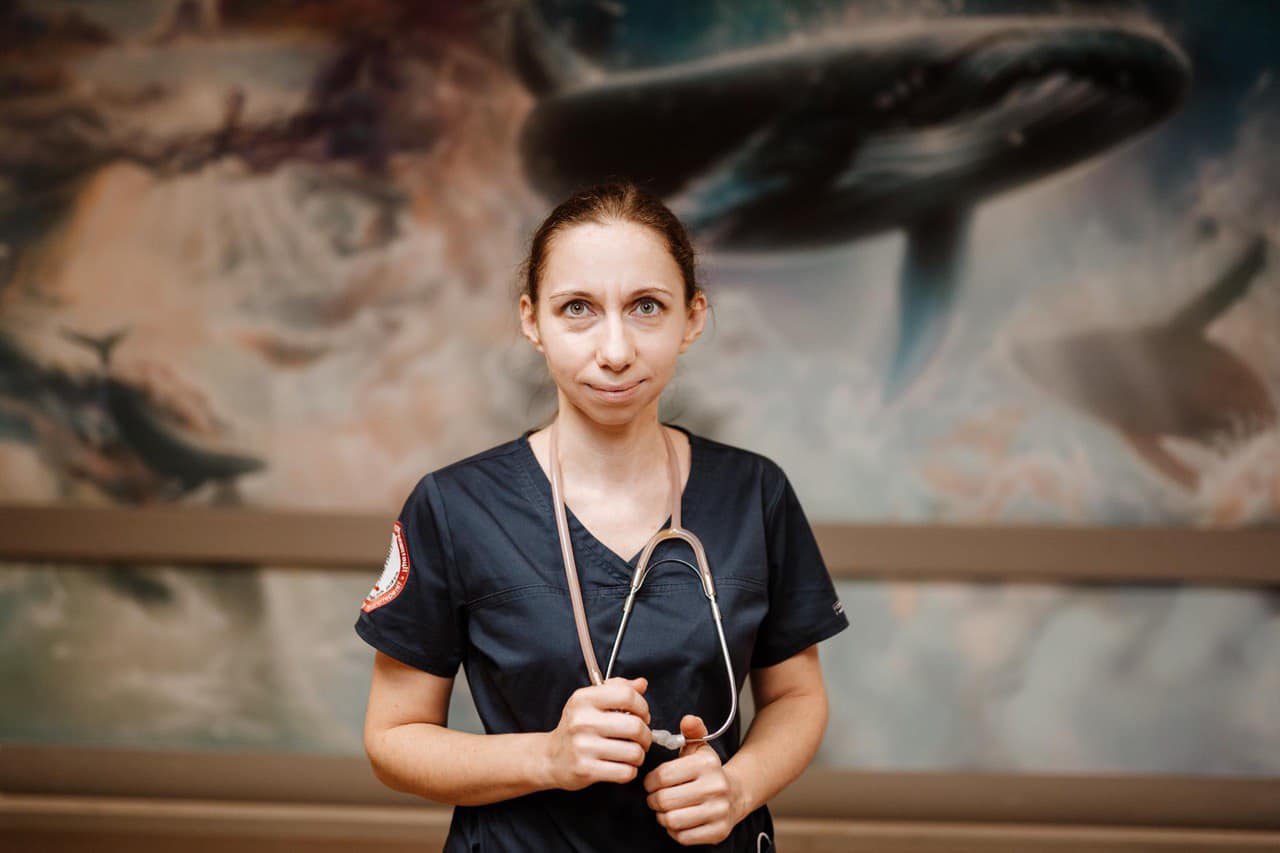
She was saving children with blood cancer and was rushing to work on October 10. Her car burned down after a rocket attack in the centre of Kyiv. Volodymyr Zelenskyy posthumously awarded Leontieva the Order of Merit, III degree.
Despite everything, Okhmatdyt doctors showed moral support for each other:
"When you have been working with the same people for several years, the main thing is that they are there for you at such moments. They know how to support you and what to advise you. We are like family because we have shared a room for two months. Patients were coming and going, there were constant worries, and the main thing that kept us warm was that we had these close people," the surgeons say.
"The biggest psychological support was that the president and the government were in Kyiv, the army protected us, and air defence worked. Even the sound of artillery was reassuring because the military worked and drove the enemy away from Kyiv. And we are still alive and have the opportunity to provide help," says Vasyl Prytula.
